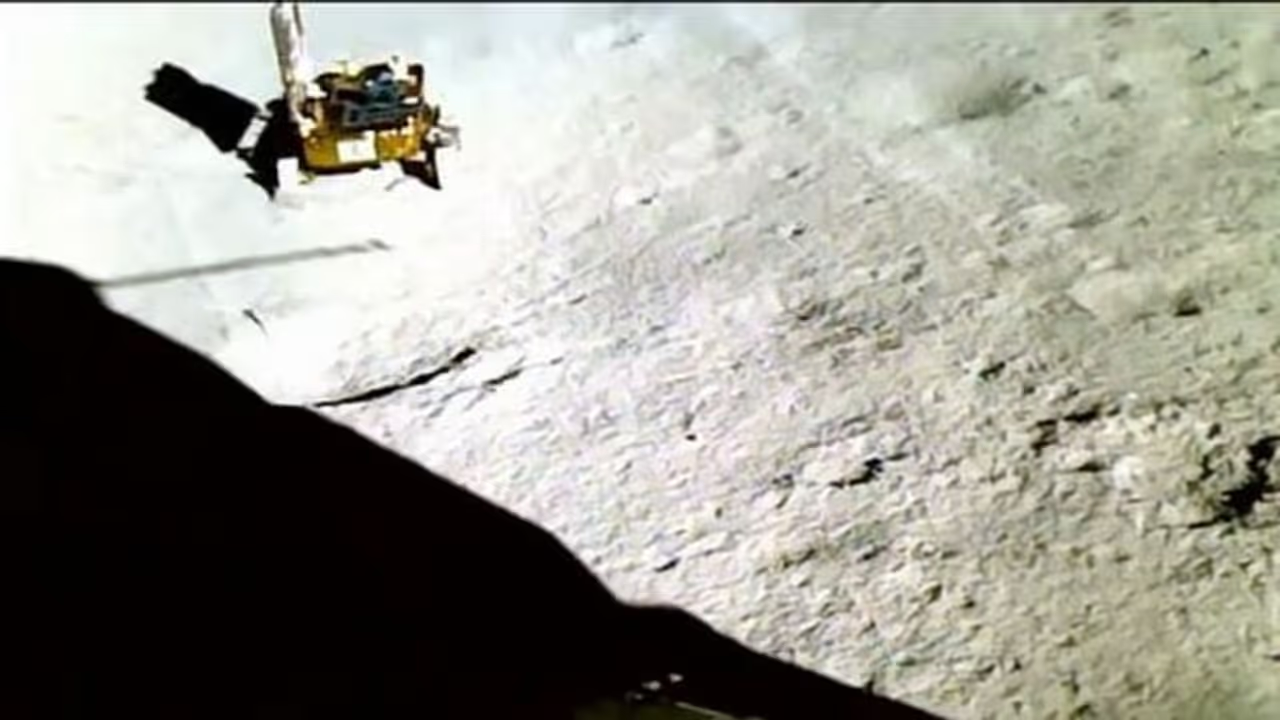Unlike a fully automated vehicle, the rover operates under the guidance of commands issued from ISRO's Mission Operations Complex (MOX), situated at the ISRO Telemetry, Tracking and Command Network (ISTRAC) in Bengaluru.
As the unforgiving lunar night descends upon the Moon's southern pole, the chosen landing site for Chandrayaan-3, ISRO remains resolute in its pursuit of comprehensive exploration. This dedication arises from the impending challenge of temperatures plummeting to extreme lows, even surpassing -200 degrees Celsius, well below the Indian lunar mission's operational threshold.

In the latest series of updates, ISRO has shared a captivating video showcasing the Pragyan rover's ventures across the lunar expanse. This intricate journey is closely overseen by the Vikram Lander, representing ISRO's meticulous efforts to navigate the challenging lunar environment.
Chandrayaan-3: ISRO shares fresh video as Pragyan rover confirms presence of Sulphur on Moon | WATCH
A heartfelt message accompanying the video on the social media platform X reflects, "Chandrayaan-3 Mission: The rover was rotated in search of a safe route. The rotation was captured by a Lander Imager Camera. It feels as though a child is playfully frolicking in the yards of Chandamama, while the mother watches affectionately. Isn't it?" Employing the metaphor of a mother-child bond and invoking the nostalgic term 'chandamama,' which resonates with many Indians, ISRO adds an emotional dimension to the lunar mission's progress.
This captivating visual spectacle highlights the Pragyan rover's adept navigation through challenging lunar terrain. Unlike a fully automated vehicle, the rover operates under the guidance of commands issued from ISRO's Mission Operations Complex (MOX), situated at the ISRO Telemetry, Tracking and Command Network (ISTRAC) in Bengaluru.
Though the rover can't communicate directly with ground stations, it transmits signals to the lander, which possesses the capability to interface with MOX. In an alternate approach, the lander can relay data to the Chandrayaan-2 orbiter, which then relays the information to ISRO's ground stations.
Earlier in the day, ISRO unveiled another video showcasing the orchestrated rotation of the Alpha Particle X-ray Spectroscope (APXS), an 18 cm tall device, through an automated hinge mechanism. This strategic movement aligns the detector head to come within about five centimetres of the lunar surface. Significantly, the APXS has successfully identified the presence of sulphur and other minor elements on the lunar landscape.
